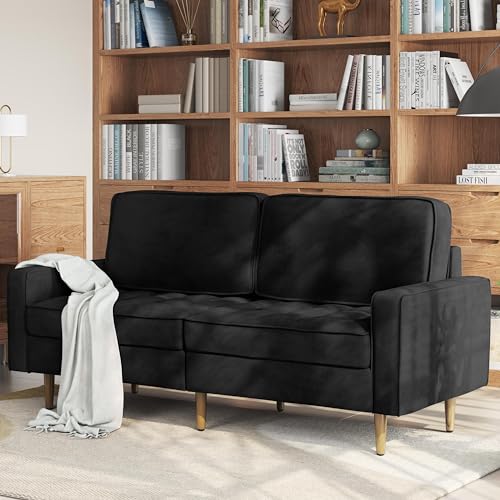Guide To 2 Seater Leather And Fabric Sofa: The Intermediate Guide On 2…
페이지 정보

본문
 Choosing Between a 2 seater fabric 2 seater fabric sofa uk leather and fabric sofa (Rvolchansk link for more info)
Choosing Between a 2 seater fabric 2 seater fabric sofa uk leather and fabric sofa (Rvolchansk link for more info) It can be difficult to decide between leather and fabric when you're looking for a new sofa. This is particularly the case if you're not a professional with knowledge of furniture.
It can be difficult to decide between leather and fabric when you're looking for a new sofa. This is particularly the case if you're not a professional with knowledge of furniture.If you have kids or live in apartments the leather option could be right for you. It's easy to wipe down and looks great in most homes.
Comfort
The sofa is typically the focal point in many homes and is an important purchase. You want a sofa that can be sat on for many hours and that looks good and stands the test of time. Deciding between leather or fabric is a difficult decision It is crucial to consider your needs and lifestyle before making a decision.
Leather is a premium material with a luxurious feel and oozes elegance in the home. It is strong and stain-resistant, it is safe for pets and children, and will last for a long time if properly cared for. However, it could be more expensive in the beginning and could require regular conditioning to prevent cracking or peeling.
Fabric sofas come in a variety of styles, colours and fabrics. They can be a more affordable choice than a leather one. They are also soft and more cosy, and can be "broken into" right from the beginning. They are more prone to dust mites and hairs from pets and require frequent cleaning. There are hypoallergenic fabrics and new technologies available.
Fabric sofas can last for up to 15 years if they're well maintained. Regular vacuuming and deep cleaning will ensure that the fabric stays clean and free of stains and odours. They also can be stretched and flatten over time, just as leather. In addition, a lot of couches made of fabric have been treated with chemicals to make them stain-resistant and flame-resistant. They can release volatile organic chemicals that may cause allergic reactions and alter the quality of air in the indoors.
Durability
We often choose sofas with fabrics that are durable, particularly if you have children or pets. It's not necessary to invest a lot of money upfront if you're going to regret it after the very first smudge or claw. You don't want something cheap 2 seater fabric sofa that won't hold up to regular use.
Leather is also extremely tough and has a remarkable tear strength. It can last up four times longer than fabric and is innately resistant against cracking, fading, and flaking. It can be conditioned to replenish its natural oils and to make it appear new.
Fabrics are cheaper and come in many different colors, patterns, and textures that can be adjusted to any style of interior. Fabrics are easy to clean and can withstand some wear and tear. However, they do fade with time and are more prone to moisture.
Microfiber is a good option for durability and is available in a wide variety of colors, but it's not as durable as genuine leather and will not withstand scratches. However, it's an excellent choice for families because of its resistance to spills and stains and it is easy to clean, typically with a damp cloth.
Suede is more difficult to clean and repair than leather. It can lose its shape and feel rough if not maintained regularly. It is also a thin material, so it might not be as durable as sheepskin or cowhide.
Allergens
Fabrics can have a significant impact on allergies. It's important to know what the different options do. Fabrics are known to hold allergens such as dust mites and pet dander, which can cause symptoms such as asthma, hay fever eczema, and rhinitis. This is because they create the perfect environment for them to fester.
Leather, on the contrary is not a reservoir of allergens and offers a constant level of comfort, no matter the season. However, it can also cause dermatitis, especially for those with contact dermatitis or are sensitive to the chemicals that are used in tanning. Using vegetable-tanned leather and maintaining regular skincare routines are essential for mitigating skin reactions.
Sofas made of leather and fabric have a high level of durability, but the material you choose will determine how long it will last over time. A high-quality material will resist fade or sagging and will withstand spills, body oils and daily use. Modern fabric couches are often equipped with stain-resistant treatment to make cleaning simpler.
It is not possible completely to prevent an allergic reaction to the leather of your sofa but you can avoid allergens if you keep a lint-roller nearby and regularly vacuum your living space. This will lessen the amount of dirt, pet hair, and dust mites on your sofa. If you're still experiencing issues with allergies, you should consider swapping your sofa with a hypoallergenic model. For instance, a couch made of synthetic leather or vinyl is less likely to hold dust and pet mites. It will also help you breathe better.
Scratches
It is crucial to consider how much wear you can expect for a leather couch. How long a sofa will last is contingent on the finish, colour and quality of the leather. Also, you must make sure that it is durable enough to withstand spillages and other accidents. This can be achieved by selecting a sofa that has a hardwood frame and high-density foam cushions.
Leather is susceptible to being scratched due to many reasons, such as stretching, marking territory or reliving the stress. Scratches can vary in severity and range from minor surface scratches to severe cuts and punctures. Minor scratches can be fixed by using a conditioner for leather. This can help restore the balance of moisture and oil in the leather, which will prevent drying out and cracking. Cuts and scratches that are deep may require a different treatment, depending on the amount of damage.
It is a good idea for cat owners to trim their cats' nails on a regular basis. This will prevent them from scratching on the couch. You can also retrain your cat's scratching habits by offering alternative scratching surfaces, like cardboard or sisal rope. You can also use a pet safe furniture polish that you can apply with a soft clean cloth.
It is important to wash your leather couch regularly and keep it out of direct sunlight and heat because they dry it out. This can cause cracks in the leather. Repairing this can be difficult and requires an overhaul. Use a leather conditioner in order to keep the leather supple.
Smell
A leather couch tends to have a different scent than fabric. This is because it's more porous and will absorb unwanted odors, such as body odor, smoke or food easily. The good news is, the smells typically disappear over time particularly when you use a nontoxic cleaning product that is fragrance-free.
If the smell is strong It could mean that something is wrong with the foam. It's usually due to the chemical off-gassing process of polyurethane that is derived from petroleum. If you're worried about this, you should look for couches that are CertiPUR-US certified or natural latex foams.
Another method to detect fake leather is to feel for bumps or texture on the back of the sofa. This is a clear indication that it's not genuine top grain leather. You can also do an inspection by tilting the sofa to one side and observing any exposed upholstery backing. If you smell it, then it's probably a synthetic substance, such as polyester or polyurethane. These materials will have a different scent than leather.
Cleaning your leather sofa on a regular basis can help keep it looking and smelling great. This will help keep it looking its best and fresh and also prevent it from becoming stiff or cracked as time passes. Start by vacuuming and dusting the couch, then wiping it down with a dry cloth and baking soda (a good natural way to eliminate smells). This should be done at least every two weeks to remove dust or dirt. Then apply a leather conditioner in order to preserve your sofa's color and texture.
- 이전글Why You Should Concentrate On Making Improvements Asbestos Attorney Mesothelioma 24.12.14
- 다음글How To Find Out If You're In The Mood To Item Upgrade 24.12.14
댓글목록
등록된 댓글이 없습니다.